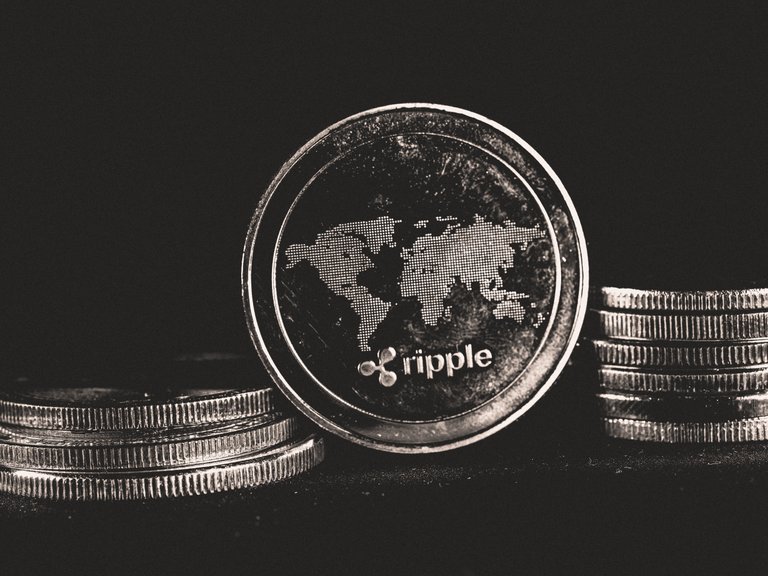Ripple (XRP): Revolutionizing Cross-Border Payments and Navigating its Future
Ripple (XRP) is a cryptocurrency that was created with the goal of enabling fast, low-cost international money transfers and facilitating efficient cross-border transactions. The Ripple network, also known as RippleNet, was designed to provide a decentralized infrastructure that connects financial institutions and enables them to transact directly with one another using XRP as a bridge currency.

History Of Ripple, Its Founders And XRP Creation
Ripple, the technology company behind the RippleNet network and XRP cryptocurrency, was founded in 2012. The company was established by Chris Larsen and Jed McCaleb, with the goal of developing a decentralized digital payment protocol and system.The precursor to Ripple was a digital currency system called Ripplepay, which was created by Ryan Fugger in 2004. Fugger envisioned a decentralized monetary system that would enable individuals to create their own money and establish trust networks.
In 2011, Chris Larsen and Jed McCaleb became involved with Fugger's project. They recognized its potential and reimagined it as a real-time gross settlement system, currency exchange, and remittance network. They co-founded OpenCoin, which later became Ripple Labs Inc., to further develop and promote this vision.
In 2012, OpenCoin released the Ripple protocol, which aimed to provide fast, low-cost international money transfers and efficient cross-border transactions. The protocol utilized a consensus algorithm called the Ripple Protocol Consensus Algorithm (RPCA), designed to enable agreement among network participants on the order and validity of transactions.
In the same year, OpenCoin introduced the XRP digital asset as a native cryptocurrency for the Ripple network. XRP served as a bridge currency, facilitating the seamless transfer of value between different fiat currencies within the Ripple ecosystem.
Motivation Behind Ripple Creation And Future
The main purpose of Ripple was to address the inefficiencies and high costs associated with traditional banking systems, particularly in the realm of cross-border payments. By leveraging blockchain technology and a consensus algorithm called the Ripple Protocol Consensus Algorithm (RPCA), Ripple aims to enable faster and more cost-effective transactions compared to traditional banking methods.
Ripple's future is subject to various factors and considerations. Here are a few key points to understand:
Adoption by Financial Institutions: Ripple has been successful in partnering with numerous banks and financial institutions worldwide, including prominent names like Santander, American Express, and Standard Chartered. The level of adoption and integration of Ripple's technology within the existing financial infrastructure will play a crucial role in shaping its future.
Regulatory Landscape: The regulatory environment surrounding cryptocurrencies, including Ripple, is evolving. Ripple has faced legal challenges from the U.S. Securities and Exchange Commission (SEC) regarding the classification of XRP as a security. The outcome of these legal proceedings and future regulatory developments can significantly impact Ripple's future.
Market Competition: The realm of cross-border payments and digital assets is highly competitive, with various projects and cryptocurrencies vying for market share. Ripple faces competition from both traditional financial institutions exploring blockchain-based solutions and other cryptocurrency projects focused on similar use cases.
Technology Advancements: Ripple continues to develop and improve its technology, aiming to enhance the scalability, interoperability, and security of its network. Ongoing technological advancements will be crucial in maintaining Ripple's relevance and competitiveness in the ever-evolving crypto and fintech landscape.
Market Demand: The demand for fast, efficient, and cost-effective cross-border transactions remains high. If Ripple can continue to demonstrate its value proposition and address the needs of financial institutions and businesses, it may see increased adoption and usage.
It's important to note that the future of any cryptocurrency, including Ripple, is inherently uncertain and subject to various external factors. It's advisable to conduct thorough research and stay informed about the latest developments and news surrounding Ripple to form an informed opinion about its future trajectory.
Thanks a lot for visiting my profile and reading the entire post. I hope you have found this post to be enjoyable and informative. Stay tuned for such insightful posts from me.

Congratulations @rocksg! You have completed the following achievement on the Hive blockchain And have been rewarded with New badge(s)
Your next target is to reach 17000 upvotes.
You can view your badges on your board and compare yourself to others in the Ranking
If you no longer want to receive notifications, reply to this comment with the word
STOP